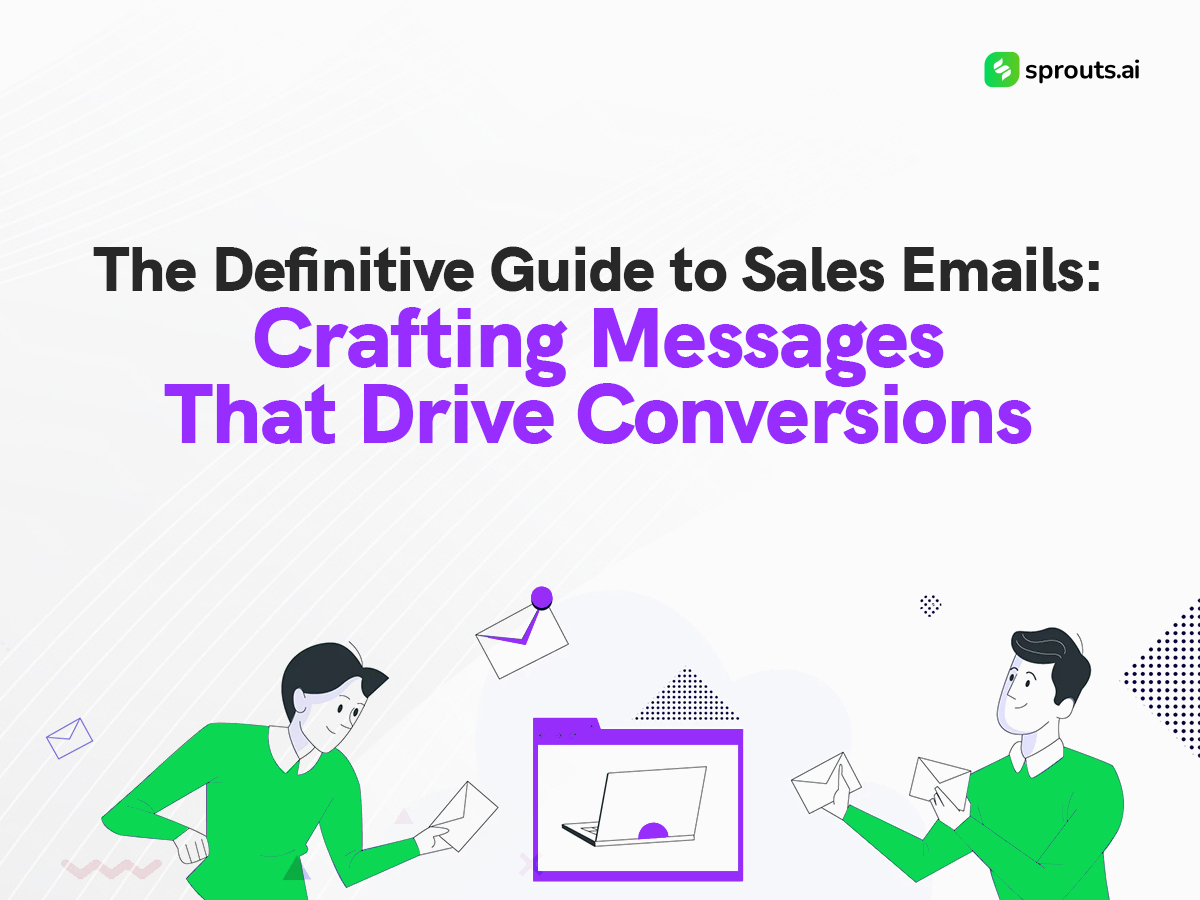Sales emails often land with a thud – ignored, deleted, forgotten. Why? Because they fail to connect with the recipient’s needs. This blog offers a solution. We’ll equip you with the tools to write emails that resonate. Learn how to personalize your message, showcase clear value, and craft a persuasive call to action. Get ready to watch your email open rates and conversion rates soar.
- Know Your Audience: Before drafting a single word, it’s essential to understand who you’re targeting. Research your audience demographics, preferences, pain points, and interests. Tailor your message accordingly to resonate with them on a personal level. Personalization goes beyond just addressing recipients by name; it involves crafting content that speaks directly to their needs and challenges.
- Craft Compelling Subject Lines: The subject line is your first impression and often determines whether your email gets opened or sent straight to the trash folder. Keep it concise, clear, and intriguing. Use power words that evoke curiosity or urgency while avoiding spammy language that could trigger filters. A/B testing subject lines can provide valuable insights into what resonates best with your audience.
- Hook Them with an Engaging Opener: Once your email is opened, you have a brief window to capture the reader’s attention. Your opening sentence should be captivating and relevant to the recipient. Pose a thought-provoking question, share an interesting fact, or address a pain point to draw them in and encourage further reading.
- Provide Value Proposition Early: Within the first few lines, clearly communicate the value you’re offering. Whether it’s a solution to a problem, a time-limited offer, or exclusive access to valuable content, make it apparent why the recipient should continue reading. Highlight the benefits they’ll gain from engaging with your product or service.
- Keep It Concise and Focused: In the age of information overload, brevity is key. Keep your email concise and to the point, focusing on one primary message or call to action. Long-winded paragraphs are likely to lose the reader’s interest. Use bullet points or numbered lists to break up text and make key points easily scannable.
- Create Compelling Content: The body of your email should be persuasive and tailored to the recipient’s needs. Highlight the features of your product or service that address their pain points or offer solutions to their challenges. Use storytelling techniques to make your message more relatable and engaging. Incorporate testimonials, case studies, or statistics to build credibility and trust.
- Include a Clear Call to Action (CTA): Every sales email should have a clear and compelling call to action that prompts the recipient to take the next step. Whether it’s clicking a link, scheduling a demo, or making a purchase, make the desired action unmistakable. Use action-oriented language that encourages immediate engagement.
- Optimize for Mobile: With more people accessing emails on mobile devices, it’s crucial to ensure your emails are mobile-friendly. Use a responsive design that adapts to different screen sizes and resolutions. Keep fonts legible, buttons easily clickable, and images optimized for quick loading. Test your emails across various devices and email clients to ensure a seamless user experience.
- Follow Up Strategically: Don’t be discouraged if you don’t get an immediate response to your initial email. Following up is an essential part of the sales process. Craft follow-up emails that provide additional value or address any concerns the recipient may have. Use a mix of email timing and frequency to avoid being perceived as spammy while staying on the recipient’s radar.
- Track and Analyze Performance: Monitor the performance of your sales emails using analytics tools to track open rates, click-through rates, and conversion rates. Identify patterns and trends to refine your email strategy continually. Experiment with different elements such as subject lines, content, and CTAs to optimize results over time.
- Maintain Consistency and Authenticity: Consistency in branding and messaging helps reinforce your brand identity and builds trust with your audience. Ensure that your emails align with your overall brand voice and values. Be genuine and authentic in your communications to foster meaningful connections with recipients.
- Test and Iterate: The key to success in email marketing is constant testing and iteration. Experiment with different strategies, formats, and messaging to see what resonates best with your audience. Be open to feedback and adapt your approach based on performance data and insights gained from testing.
Mastering the skill of sales emails requires a combination of creativity, strategy, and data-driven decision-making. By understanding your audience, crafting compelling content, and optimizing your emails for maximum impact, you can create messages that not only grab attention but also drive conversions. Keep refining your approach based on feedback and insights to stay ahead. With the right tactics and perseverance, you can turn your sales emails into powerful tools for business growth and success.

